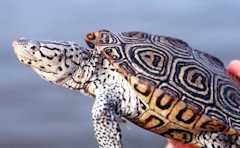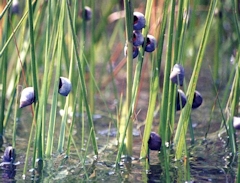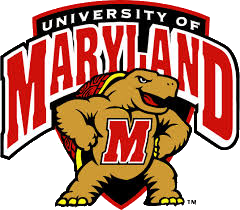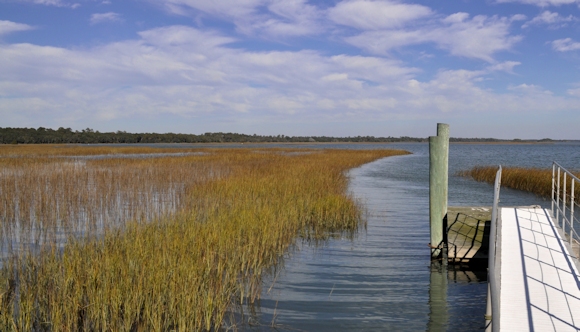 The diamondback terrapin turtle is one of a number of species that are critical to the health of our salt marsh. They directly contribute to the health of the salt marsh by eating periwinkle snails. The snails are a necessary part of the ecosystem helping breakdown some of the marsh grass thereby providing nutrients to other species. But unchecked, they would consume enormous amounts of marsh grass virtually destroying the ecosystem. A decline in the diamondback terrapin population is an early warning about the health of our salt marsh, like the proverbial “canary in the coal mine”.
The diamondback terrapin turtle is one of a number of species that are critical to the health of our salt marsh. They directly contribute to the health of the salt marsh by eating periwinkle snails. The snails are a necessary part of the ecosystem helping breakdown some of the marsh grass thereby providing nutrients to other species. But unchecked, they would consume enormous amounts of marsh grass virtually destroying the ecosystem. A decline in the diamondback terrapin population is an early warning about the health of our salt marsh, like the proverbial “canary in the coal mine”.

Periwinkle snails munching on marsh grass
 On a lighter note, the diamondback is also the State reptile of Maryland and the University’s mascot, Testudo: “Fear the Turtleâ€.
For more information:
SC Department of Natural Resources
Diamondback Terrapin Working Group
Wikipedia
The World of the Salt Marsh book review
On a lighter note, the diamondback is also the State reptile of Maryland and the University’s mascot, Testudo: “Fear the Turtleâ€.
For more information:
SC Department of Natural Resources
Diamondback Terrapin Working Group
Wikipedia
The World of the Salt Marsh book review

Healthy Johns Island marsh at high tide

 Roseate Spoonbill
Roseate Spoonbill